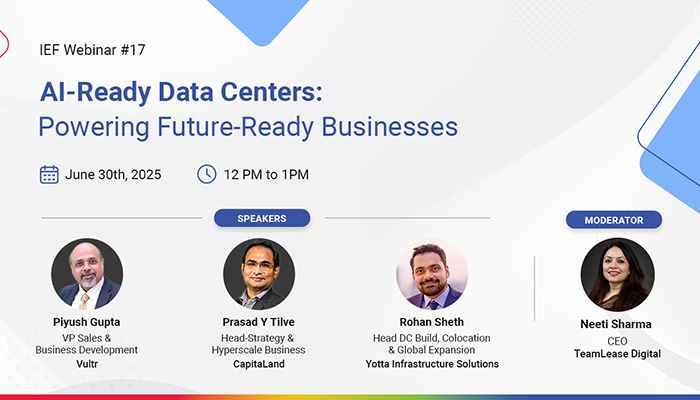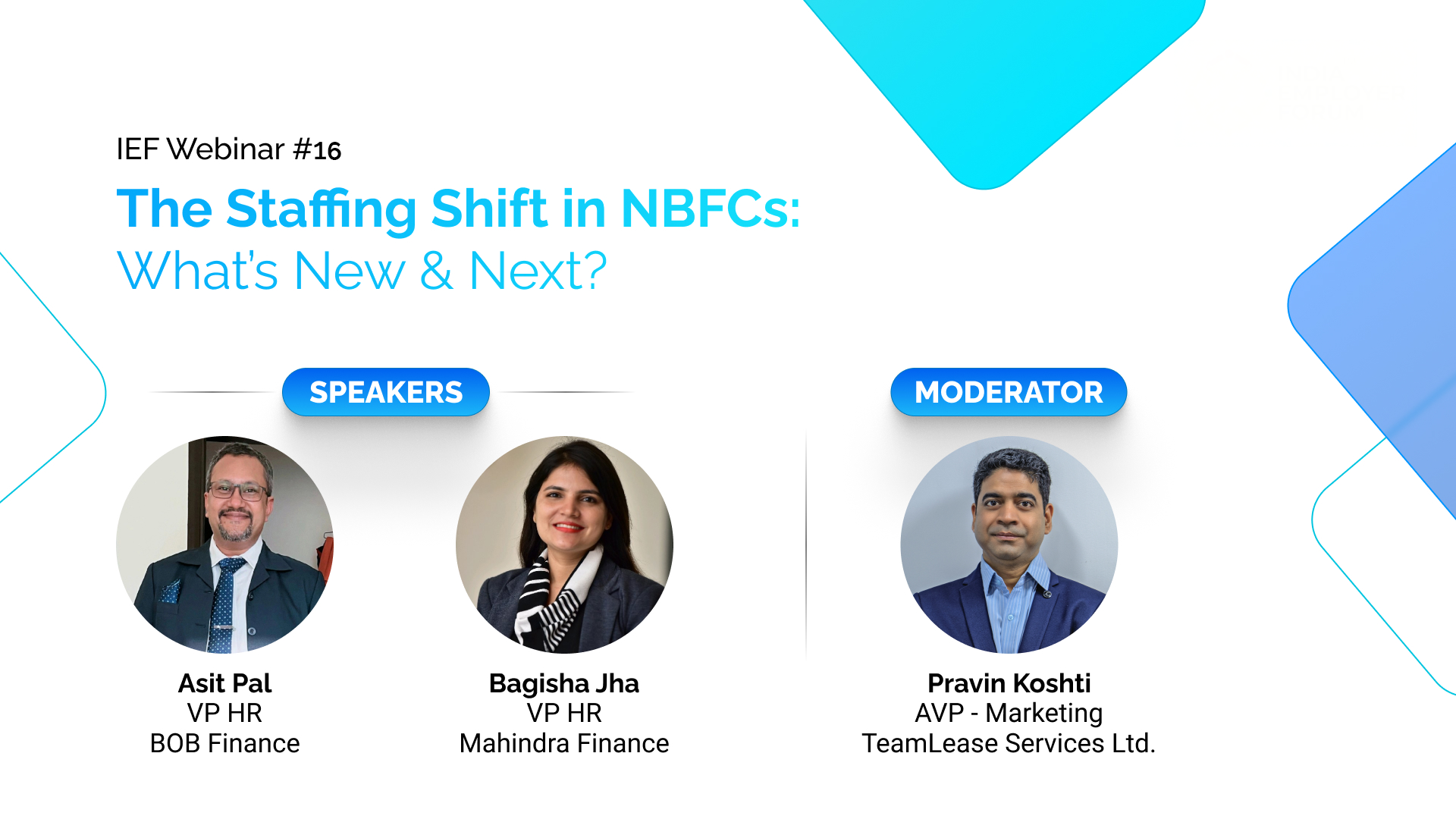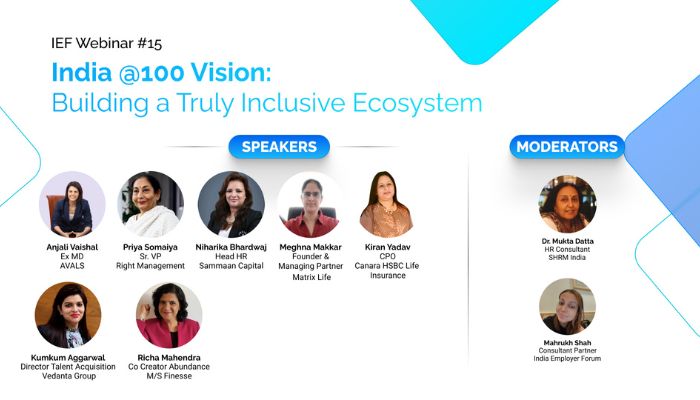Social security is indispensable in today’s world of work, where we need safety nets that cater to the uncertainties arising from financial emergencies, lay-offs and ageing. While India does have a social security framework in place with the inclusion of entities such as ESIC and EPFO, it is ridden with inefficiencies and falls short of reaching out to India’s increasingly diverse worker population. Data indicates that only 7.17 lakh or 1.1% of 6.3 crore enterprises and only 7 crores or approximately 12% of our 59 crore strong labour force make monthly social security contributions. We need to recalibrate social security systems to meet the requirements of the current world of work, creating a system that is just, financially sound, and sufficient in catering to the needs of the people.
This panel discussion on “Reimagining the Social Security System In India”, organised by the India Employer Forum in collaboration with TeamLease Services Ltd and The Takshashila Institution had 5 eminent panellists involved in thought-provoking discussion to reshape India’s future social security framework. The session was moderated by Mr. Manish Sabharwal, Vice-Chairman, TeamLease Services Limited.
Manish Sabharwal inaugurated the panel discussion with a quote saying “Social security really matters because we don’t live in an economy, we live in a society but social security is an intersection of economy and society”
When asked about Financing for social security, Dr. Renuka Sane, MD, Trustbridge Rule of Law Foundation, said, “Typically, the world over social security has been financed from taxpayer’s money and tied very closely to employers. Now this works in an OECD context, where everybody has an employer to speak and the demographics were in such a way that you had enough taxpayers paying for a few elderly and life expectancy was lower and so the fiscal mathematics just always worked out. The world has changed and we need to recognise that fact. There are two aspects of social security – retirement security and health and they are very different. There is a big case to be made for taxpayer’s money to go into means-tested pension programs like the IGNOAPS where you give a top-up or direct benefit transfer to those who find themselves destitute in old age”.
When asked about the birth effect in the current thinking of social security, Dr. Nilanjan Ghosh, VP – Development Studies and Sr. Director, ORF Kolkata Center, said “My father retired 25 years ago and he was working in the private sector, retired with a pool of money that didn’t have a pension and the value of his money declined over time and the returns on that entire pool is also declining over time given the fact that the infrastructure is declining. Now we have been forcing all these guys to take a riskier move to get into the stock market or the equity market so that they can maintain their standards of living. The very purchasing power of the old age is declining whereas their medical costs are increasing. Now given this, we have a very fragmented structure as far as the pension scheme or the retirement scheme is concerned because looking at the entire system, for salaried employees, it is the EPFO which is a mandatory segment scheme where employees and employers are contributing to the retirement benefits and the NPS, a voluntary scheme that allows the government and the private sector and for those in the unorganised sector, the Atal Pension Yojana (APY) providing a collective pension of Rs. 1000 to Rs. 5000 per month. We don’t have a comprehensive streamlined pension framework covering all the citizens equally”.
Nitin Pai, Co-founder & Director – Takshashila Institution, answered the question “In a world of ageing population & fiscal deficits, what do you think is the future and current state of social security”? “I started thinking about it very seriously during Covid and Dr. Nilanjan just mentioned how social security happened during Covid. People literally collected money for each other. We had domestic people and colleagues who needed help, so we passed the hat around. There were also online platforms such as Give India, Milaap etc, where you could put the name of the deserving person and circulate it on social media and all your WhatsApp friends and Twitter followers would contribute Rs.500 and so on. What it means to me is that it’s both a very powerful idea on how we can do social security for India but also tells us how India did social security in the past”.
Dr. Pravin Sinha, Secretary General, Social Security Authority of India, added his note to the discussion, “We are increasingly becoming the individualistic society, where the joint family has broken and all families are in search of a situation that the reluctance on the part of one family to stand for another family or another individual. We see old age people in the streets being thrown out by their families in every city in India and else where. Whether we as a collective feel that social security is a necessity or not? If we look at the system, whether it is the Universal Declaration of Human Rights (1948), UN or ILO, every international body has said that it is a right. The constitution of India, Articles 37, 38 and 42, also emphasize that social security must be available to all individuals”.
When asked about “employers paying social security in addition to salaries”, Yogi Shriram, Consultant, Strategic HR, said, “Articles 41, 42 and 43 of the constitution delve upon social security benefits that need to be provided and it’s a concurrent list subject by the state provided that it has the funds. The question is that the state must adopt the fund in some way, whether it’s taxpayer’s money or others to make sure that people in the unorganised sector are also covered. The biggest problem today, in terms of flexibility of the EPFO and ESI Act, which are two central legislations, is for those who don’t have a master-servant relationship including gig workers, platform workers, etc. It is very important to have them covered, otherwise they will be left with no social security benefits even in times of great need. In terms of flexibility, while it is a cost to the employers, they should be given the choice of opting out of the ESI Act”.





